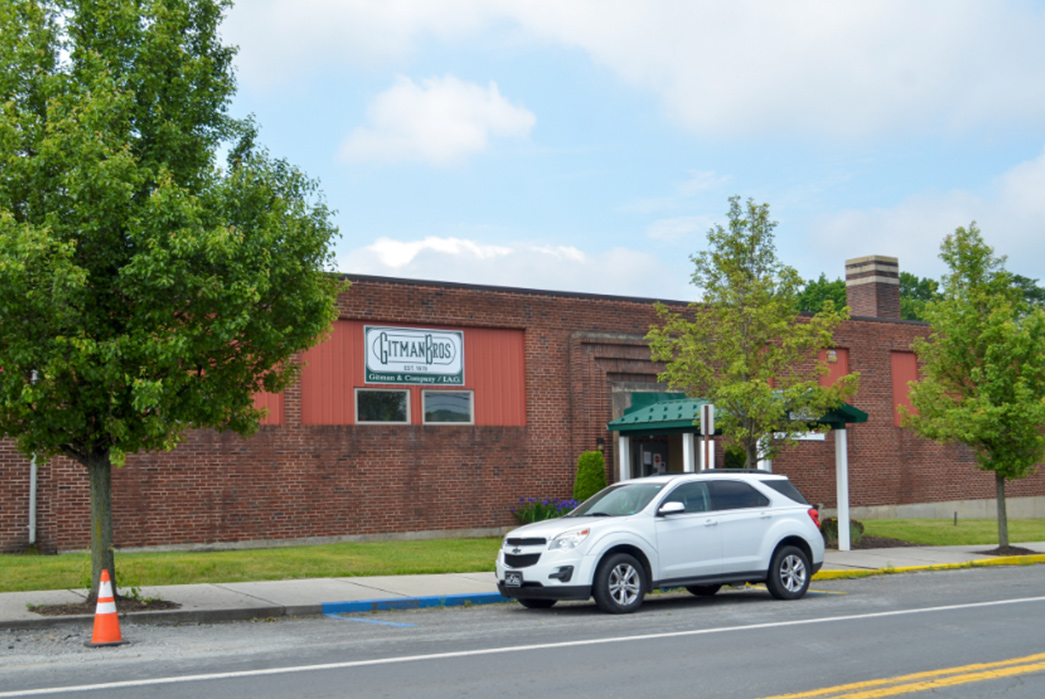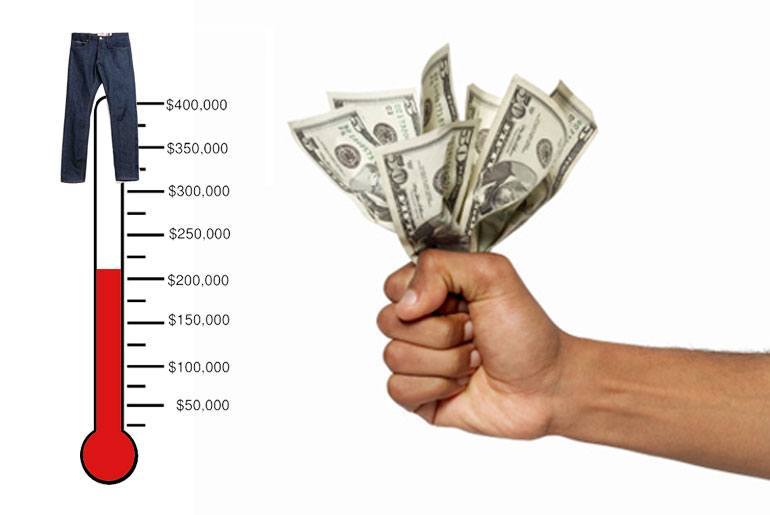- Heddels
- Posts
- Gitman Bros. Vintage – History, Philosophy, Iconic Products
Gitman Bros. Vintage – History, Philosophy, Iconic Products
Gitman Bros. Vintage – History, Philosophy, Iconic Products
Gitman Bros. Vintage represents three generations of classic American shirtmaking. Get to know the family in our history of the brand.
James Smith

Every good brand has its speciality, but when it comes to Gitman Bros., shirting is an obsession. With roots that stretch back to the early 1930s, Gitman has developed a formula for the perfect button-down and produced private label shirts under contract for brands such as Burberry, Brooks Brothers, and Thom Browne.
Gitman Bros. Vintage is the brand’s sub-label that pays homage to the brand’s rich history by producing shirts that reference iconic staples and classic pieces from the brand’s archives, which translate harmoniously into the modern wardrobe.
Gitman Bros. History & Philosophy
Gitman factory photo. Image via Gitman.
The year is 1932, and the Great Depression is in full swing. The pressure of the ever-rising costs of running a business in New York has forced a group of highly skilled shirt makers to up sticks and flee the Big Apple. One of these people was Brooklyn-born shirt contractor Max Gitman, who looked west (although not too far west) and chose Ashland, Pennsylvania as the place to start afresh and establish the Ashland Shirt & Pajama Company.
Gitman trained his workers to become skilled shirt makers, and installed a philosophy committed to high-quality American-made garments. With World War II on the horizon, the Ashland Shirt & Pajama Company would profit greatly from the military’s demand for shirting. But, in addition to the profits, the specifications required to make the shirting for military personnel meant that Max and his fleet of workers had to develop the skills needed to produce precision-made dress shirts that were handsome, comfortable and reliable all at the same time. Before long, the small, rural coal-mining town of Ashland became known as a hotspot for gold-standard shirt making.
Image via Gitman.
The twin sons of Max Gitman — Alfie and Sheldon ‘Shelly’ Gitman —joined the business in 1950. Shelly was enlisted to run the cutting room, whilst Alfie manned the finishing room. Over the next two decades, the brothers became industry pros, championing the company’s philosophy and meticulous manufacturing processes, and ensuring the production of some of the finest shirts the USA had to offer. During this time, Max Gitman passed away, and the twin brothers were given full reign of the company, integrating another purpose-built shirt factory into the business.
Some of the many labels made in the Gitman factory.
It wasn’t until 1978 that these shirts bore their founder’s name. The suggestion came from one of the brand’s salesmen, and soon the Gitman brothers took the first Gitman Bros. shirts to market. The factory continued private label shirtmaking, which reeled in big names from across the fashion world, but Alfie and Shelley re-marketed their most popular sport shirts under a new label —Gitman Bros.
The brothers finished their product with key details like double-tracked stitching, chalk buttons, an additional back-collar button, locker loop, and box pleating. What set Gitman Bros. shirts apart even further from their competitors was the range of new and exciting fabrics. Bright plaids, vibrant patterns, and unique prints would inspire the birth of the brand’s heritage line, Gitman Bros. Vintage, three decades later.
Gitman Bros. Vintage came about in 2008 after Gitman’s then-creative director, Chris Olberding, was directed to archived line books while overseeing a private label production for Thom Browne. After the glory days of Gitman Bros., the brand had concentrated less and less on the in-house line, but Olberding was wowed by the vibrant fabrics, heritage details, and construction of the old Gitman Bros. product.
Olderbing realized the brand could start using its pioneering history as fuel for its forward momentum. As such, the vintage line was launched with the philosophy of bridging the old and the new, with the same devotion to quality and American craftsmanship of days past.
Gitman Today
Despite some rocky times during the COVID-19 pandemic, all Gitman Bros. Vintage shirts are still made in the USA. Sadly, the brand’s historic Ashland shirting factory was closed in 2020, rocking the local community and leaving many worried about the future of this MiUSA stalwart. Thankfully, Gitman’s parent company, Individualized Clothing Group, owns a major shirtmaking factory in Measure Up. Based in the foothills of Lafayette, TN, all Gitman Bros. Vintage shirts are now produced in this partner factory by equally skilled shirtmakers, some of whom are second- or third-generation.

The now-defunct Gitman Bros Ashland, PA plant
Gitman Bros. Vintage is still led by Chris Olberding, who is now President of Sales at Gitman. The line has been highly successful since its launch nearly 20 years ago. Each season features an array of shirting options, ranging from staple, heritage variations like oxfords and chambray to lively prints and high-textured fabrics such as felt or corduroy. Each fabric is designed using archive line books and swatches of vintage shirting fabrics as inspiration.
Characteristics and Iconic Models
To balance the use of vintage fabrics and hallmarks, Gitman Vintage shirts have a slightly modernized fit, made with a higher armhole, slim sleeve, and a tailored silhouette. As part of a heritage charm offensive, most Gitman Vintage shirts still feature all the finishing details specified by Alfie and Shelly Gitman back in 1978
Green Grosgrain Labels
The green neck labels on Gitman Vintage shirts use the original Gitman Bros. branding from the seventies, but include an additional green ‘Vintage’ label to indicate the shirt is from the contemporary vintage line.
Image via Fine Tooth Comb
Originally instated because they were cost-efficient, the thick chalk white buttons are a hallmark finish of Gitman shirts.
Image via Fine Tooth Comb
This additional button on the rear of the collar helps to keep the collar tidy and structured.
Locker Loop & Box Pleat
Image via Fine Tooth Comb
Locker loops are usually found above the neck labels, but Gitman shirts feature one above the pleat on the back of the shirt, allowing for easy storage and fewer wrinkles. The box pleat is a tailored detail that helps to improve fit and range of motion.
Iconic Products
The Classic Oxford
Gitman Bros.’ most straightforward shirt—and probably their most famous—this is their original sport design. As one of the most versatile and essential items in a modern wardrobe, the Oxford Shirt can be dressed up or down, and this Gitman Vintage Bros. version features all the heritage hallmarks mentioned above.
A true classic that’s often imitated but never bettered.
Available at Lost & Found for $195.
Camp Shirt
Produced in a range of materials seasonally, Gitman’s Camp Shirts are a casual, short-sleeved style based on mid-century silhouettes. The camp collar provides effortless cool while the short sleeves leave the arms exposed in warmer temps.
Available from $249 at Lost & Found.
Crazy Prints
Every year, Gitman wows us with its array of historic prints. Some are just plain gorgeous, but others are on the crazier end of the spectrum, like this all-over dog print.
Jamaica Gift Shop Camp Shirt, for $235 from TENDREL USA.

Gitman Bros. Vintage x STAG Biscuits shirt.
Collbaorations
Gitman Bros. Vintage has collaborated with brands across the menswear pantheon, and also collaborates with boutique stores to create exclusive silhouettes and shirt makeups.
Gitman Bros. Vintage x Division Road Japanese Slubbed Twill Check Camper Shirt, available for $245 from Division Road.
Gitman Bros. – The Final Say
Image via Division Road
If it’s an authentic American product you’re after, look no further. The Gitman story spans three generations from the big city to small town USA, and they haven’t seemed to lose a step in the transition. The product itself manages to be as blue-blooded as Brooks Brothers and as iconoclastic as Supreme without collapsing as a contradiction.
Think shirts. Think Gitman.
